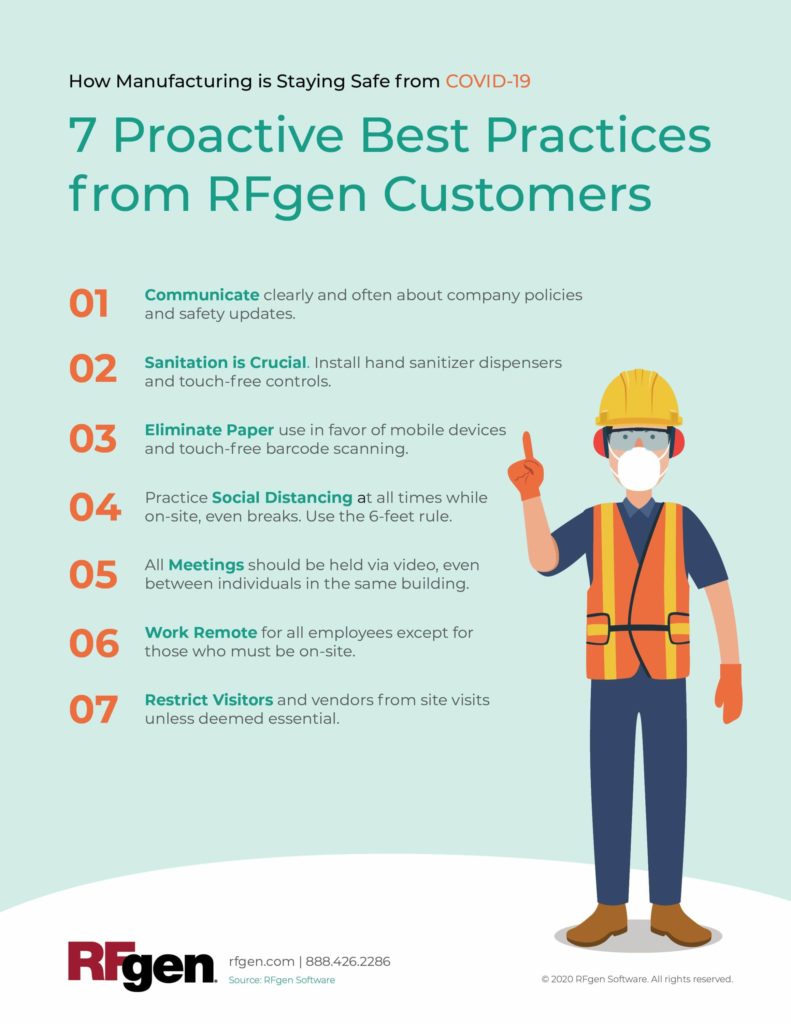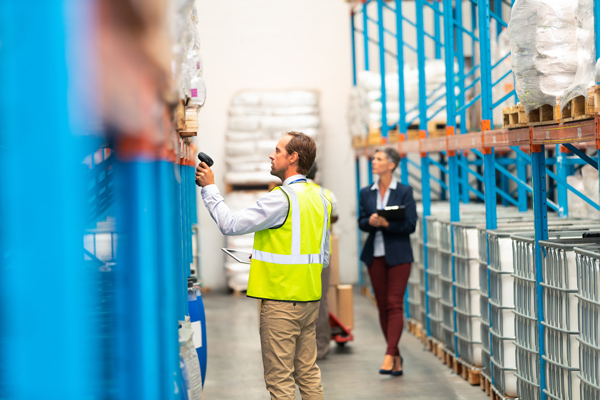Overview
- The supply chain is undergoing unprecedented stress and evolution due to COVID-19.
- As it adapts, it will have to keep workforce safety front of mind.
- Technologies like mobile barcoding augment worker safety by supporting social distancing measures and reducing physical and mental strain while boosting productivity.

As manufacturing adapts to this new and evolving supply chain, it will have to keep one thing front of mind – workforce safety. Continuing to rely on manual processes that require constant human-to-human contact simply won’t cut it. Manufacturers must do everything in their power to protect workers from falling ill or spreading COVID-19. Meanwhile, veteran employees find themselves increasingly short-handed, necessitating new workers to be trained quickly and work with even more efficiency.
Technology that supports workforce safety and productivity measures will be essential to safeguard our supply chain, and ultimately, our health.
Safeguarding our Essential Workforce
Many supply chain workers may be absent due to self-isolation or quarantine, while those who remain at work are at risk of falling ill with the novel coronavirus, or COVID-19. Companies like Amazon have already committed to enhanced cleaning and social distancing measures (maintaining a 6-feet distance between workers) throughout their warehouses to ensure workforce safety.
In fact, a recent Kardex survey on the impact of COVID-19 in the warehouse revealed that 94% of companies are modifying operations to accommodate social distancing.
Our RFgen team reached out to our customers to find out what changes they’ve made to keep their workforce safe. The result is a list of essential best practices every organization should follow. Some of their tactics include:

Mobile technology can enhance these initiatives while acting as a force multiplier for workforces facing limited resources, bandwidth and endurance.
Also Read: Building a Better Workforce—Humanizing Technology in the Supply Chain »
Here are a few other examples of how mobility adds a layer of safety for your teams:
Increasing Social Distancing
Workers will need to be kept farther apart to adhere to 6-feet social distancing measures. This means managers will need to reduce object transfer, including paper spreadsheets and computer workstations, between people. Commute distances throughout warehouses will also need to be reduced to keep potential interactions between workers to a minimum.
With purpose-built handheld scanning devices, workers can scan barcodes up to 70 feet away without having to risk injury by climbing or moving pallets. In addition, this increases the distance between workers, thus reducing the risk of spreading infection.
It also eliminates unnecessary touching or handling of equipment or tools, such as when typing on a keyboard or handling paper or pens already touched by other workers, which can spread infection. Since symptoms can take up to two weeks to develop, workers may be potentially ill with COVID-19 without even knowing it.
Handhelds can also more easily be disinfected and thoroughly cleaned between shifts.
Reducing Mental Stress
With a smaller workforce, operations will need to find ways for workers to complete more work, with less effort and fewer distractions. Workers, who may be anxious or concerned about the illness, will be looking for ways to reduce mental stress, especially at work. Being able to take pride in knowing they are doing a job well and helping society in a time of need, without putting their fellow coworkers at undue risk, will go a long way to increase peace of mind.
With mobile data collection, workers can achieve inventory accuracy of up to 99.5% and boost productivity by 30%, so they don’t have to worry if their numbers are correct or waste time performing manual recounts. This increased accuracy can also reduce on-hand stock levels by 10% to free critical workspace and allow for more room between workers. This helps reduce stress levels, improving the mental health of your workforce in this time of uncertainty.
Reducing Repetitive Movement for Reduced Physical Strain
Activities that lead to stress-related injuries, like repetitive, laborious movements, will need to be minimized.
Mobility helps reduce repetitive movements for less physical strain. By minimizing tedious manual tasks, workers are less likely to suffer injuries related to repetitive activities, such as carpal tunnel, tennis elbow, chronic back pain, or other cumulative trauma injuries.
Minimizes New Worker Training Time
Intuitive, easy-to-learn mobile apps can significantly reduce new worker training time, by as much as 80%. This will be critical as more workers have to adapt to new manufacturing processes or are hired to fill demand gaps.
One customer describes this impact:
Training RFgen is the easiest part. Now I’m able to train new people in just one or two days versus weeks before. Depending on how much warehouse experience they have, I have to do more training on how the warehouse works than RFgen.
– Warehouse Supervisor and Materials Manager, Global LNG Exporter
A Safer Supply Chain
The world is relying more heavily than ever on the supply chain for daily survival. We need to come together to protect our workforce and follow best practices for new safety guidelines. This should include equipping workers with mobile technology that supports safety initiatives, even in a time of limited resources and strained endurance.
If can protect our supply chain, consumers will gain confidence that delivery of their essential goods can be met, better equipping the public to shelter in place and uphold social distancing measures, and ultimately, ensure the health of all individuals.







